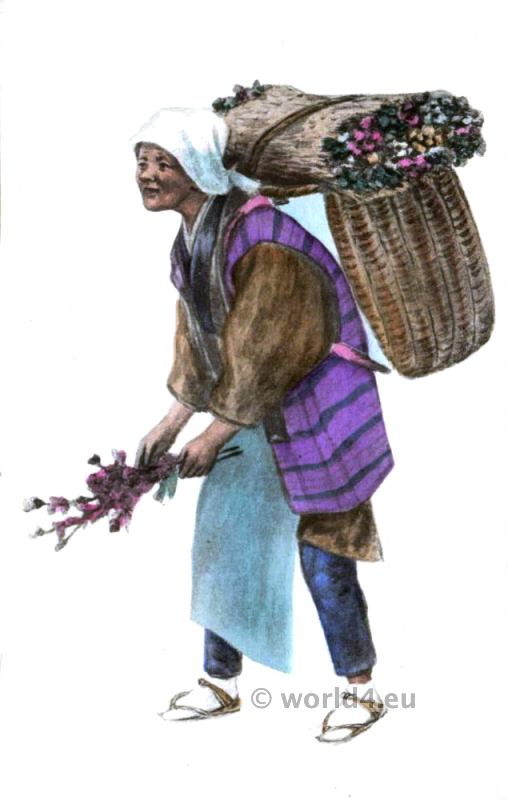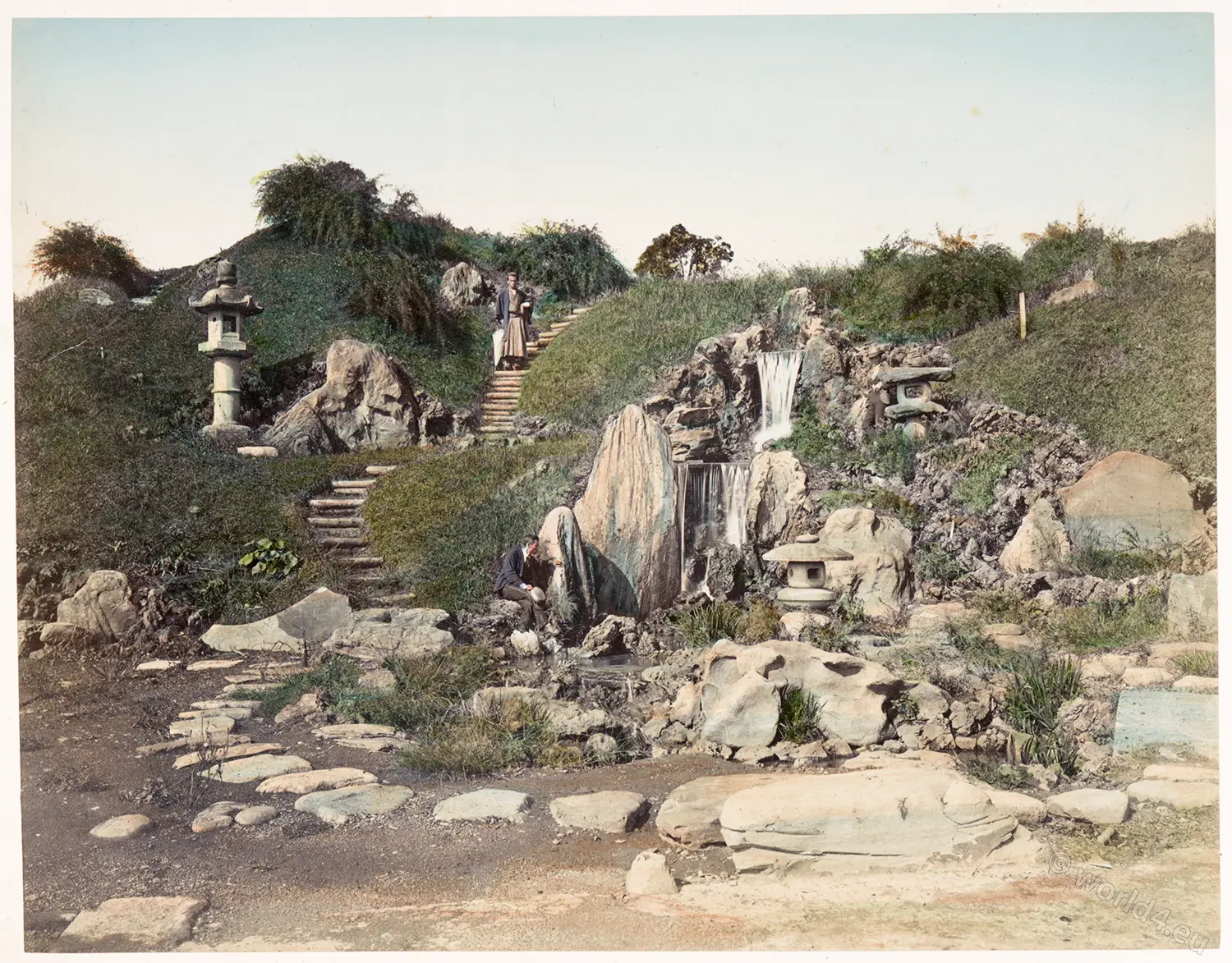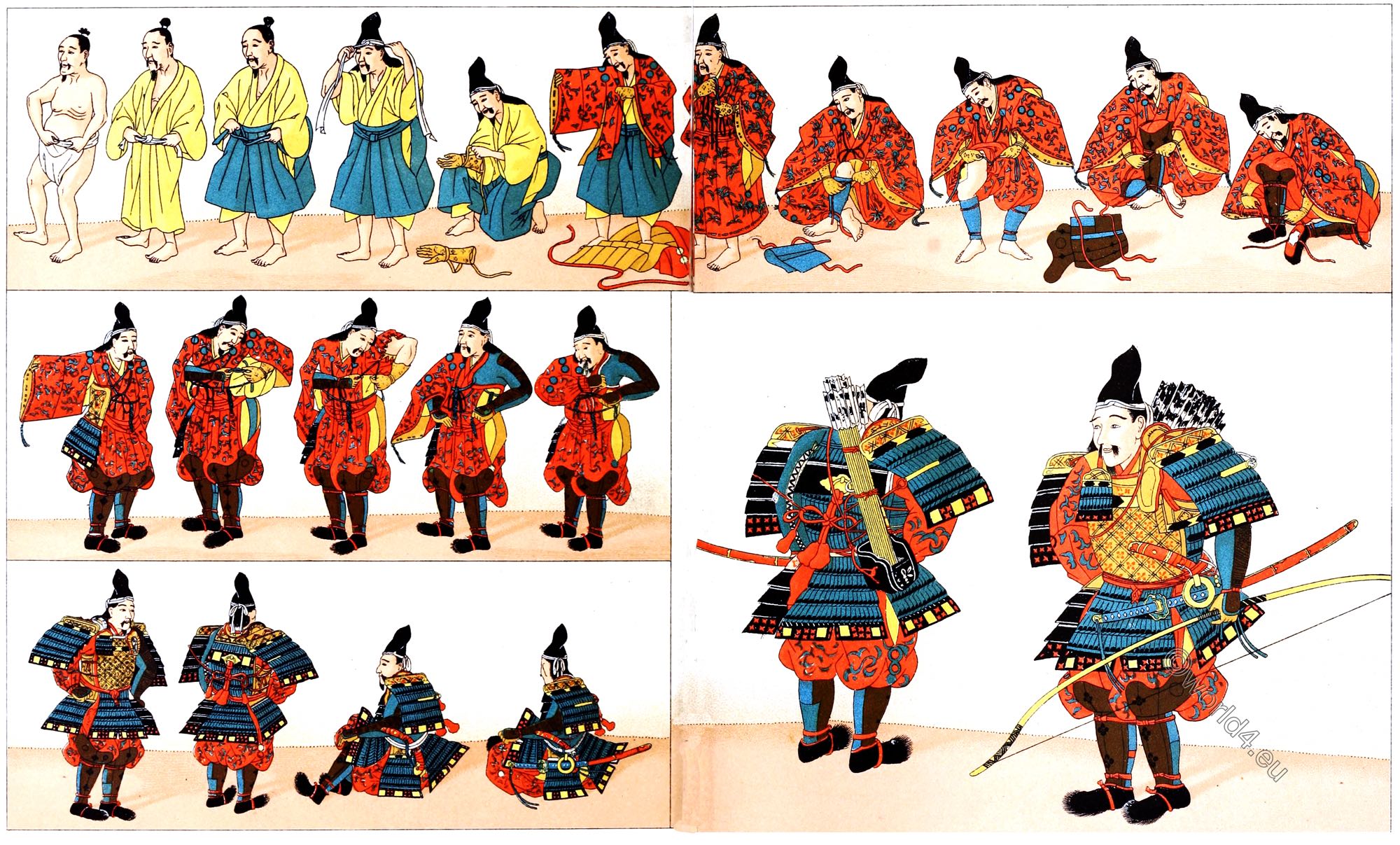From the Heian period (794-1185) to the Kamakura period (1192-1333), the beauty of wisteria blossoms against a backdrop of green pine trees intertwined with them was the standard of appreciation.
Wistaria blossoms symbolize summer, revered for beauty and size. Josiah Conder describes the beloved Wistaria as the first popular summer flower celebrated in Japanese gardens.
Plate III.
THE
FLOWERS OF JAPAN
AND
THE ART OF
FLORAL ARRANGEMENT.
SUMMER FLOWERS.
WISTARIA BLOSSOMS
by Josiah Conder
THE first popular flower of Summer, which, in public places, attracts the pleasure seeker, is the Wistaria, blooming in May, soon after the cherry; blossom has fallen. This stalwart flowering creeper is reared upon large trellises, arranged to cover long walks, bridges, or arbours, in pleasure grounds and gardens. A favourite position is one sheltering an open gallery, which overhangs a lake or stream. In the precincts of the popular temple at Kameido, in Tokio, close to the famous plum trees, there are Wistarias of magnificent size, bearing blossoms which hang in rich purple clusters, from two to three feet in length. Wide rustic galleries, in connection with garden kiosks, extend over an artificial lake stocked with gigantic gold fish, and the Wistaria trellises form an extended covering overhead. A belief exists that this flower attains great size and beauty if its roots are nourished with the rice-wine of the country, and there is, at Kameido, a tree producing specially fine blossoms, at the base of which visitors are accustomed to empty their wine cups. Other fine specimens exist in various parts of Japan, bearing clusters over three feet in length, among which may be mentioned one at Noda, in the province of Settsu, called the Shitose, or tree of a thousand years.
The Wistaria of purple blossom is most common and most esteemed, ranking higher than the white kind. This is an exception to the prevailing custom, which places white before other colours in blossoms of the same species, and especially proscribes purple flowers as associated with mourning, and unfit for felicitous occasions. In various designs the Pheasant is shown in combination with the purple Wistaria.
FUJI. [The Wistaria]
by Alexander Francis Otto.
If one could be transported to the renowned Wistaria arbors of Kameido Temples, and there view the masses of delicate, purplish clusters of Wistaria, there would be slight cause for wonderment that this most impressive of Oriental flowers is emblematic of youth and Spring-time; for surrounded on every side by so gorgeous a display of Nature’s flora, thoughts of life’s glad morning with its buoyant love and happiness come most to mind.
When artists fondly couple the cuckoo with the Wistaria, it means the approach of Summer, as full bloom is reached in May; the purple Wistaria is often accompanied by the pheasant, the purple blossom being venerated more than the white, though both are conspicuous in Japanese decorative work.
The flower is highly prized by all classes, and April and May invariably find the people in the gar- dens indulging in gay festivities, drinking rice wine and writing prettily phrased verses in the Wistaria’s honour, or in praise of Spring. The verses are attached to the budding clusters, the character of the blossoms’ development being accepted as portentous of good or evil in their future married life: a beautiful and romantic custom, thoroughly typical of the quaint and fascinating folk-lore of Japan.
Source:
JOSIAH CONDER, F.R.I.B.A. Professor of Architecture, and Architect to the Imperial Japanese Government. WITH ILLUSTRATIONS BY JAPANESE ARTISTS. The floral art of Japan: being a second and revised edition of the flowers of Japan and the art of floral arrangement by Josiah Conder (1852-1920). TOKIO: PRINTED AND PUBLISHED BY THE HAKUBUNSHA, GINZA; ALSO BY KELLY AND WALSH, LIMITED YOKOHAMA, SHANGHAI, HONGKONG, AND SINGAPORE. London : SAMPSON LOW, MARSTON, & COMPANY, Limited, ST. DUNSTAN’S HOUSE, FETTER LANE, E.C. 1892.
Source: Mythological Japan: the symbolisms of mythology in relation to Japanese art; by Alexander Francis Otto and Theodore S. Holbrook, with illustrations drawn in Japan, by native artists. Philadelphia: Drexel Biddle, 1902.









